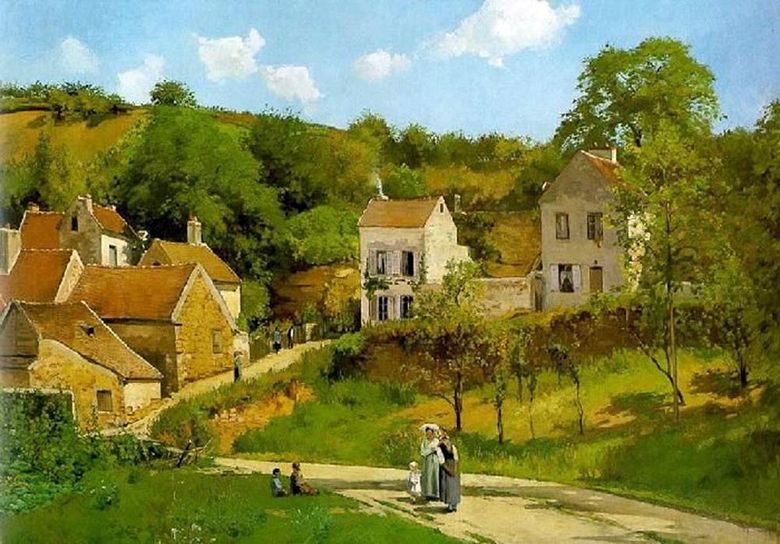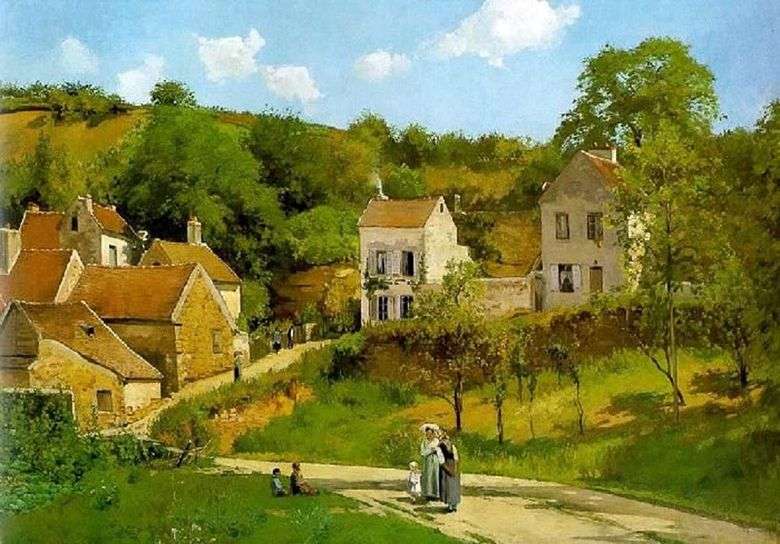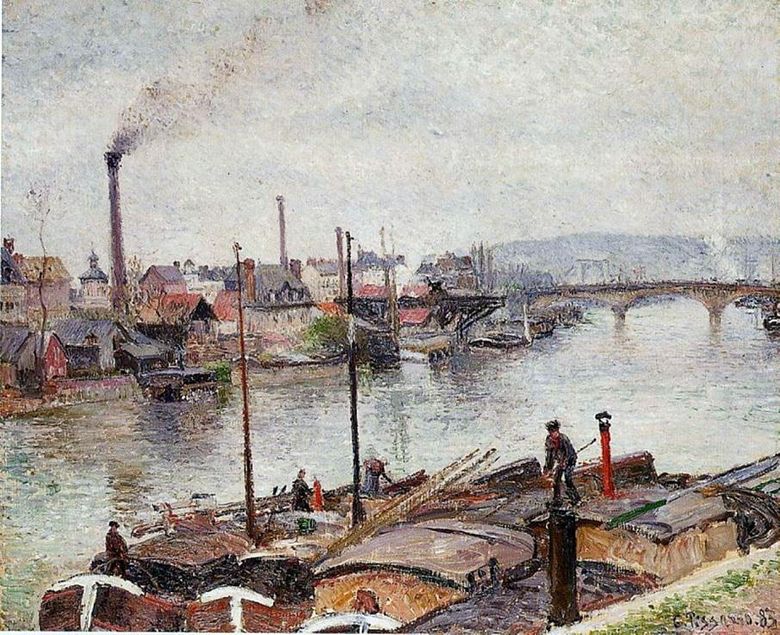
The early period of creativity was marked by the strong influence of K. Corot and G. Courbet. In the 1860s his landscapes, which do not contradict the canons of official art, were exhibited several times in the Salons. Soon, having overcome the influence of G. Courbet and having developed his own style, Pissarro turns out to be among the outcasts and falls into deep poverty, unable to sell his paintings.
In moments of despair, he tries to break with painting forever. During the Franco-Prussian War, C. Pissarro went to London, where, together with K. Monet, he painted the landscapes of London from life. Meanwhile, his house in Louvienien was captured by the Prussians and looted. Most of the remaining paintings were destroyed there: the soldiers used them as aprons or laid them in the garden under their feet in the rain.
 Ermitage à Pontoise – Camille Pissarro
Ermitage à Pontoise – Camille Pissarro Lacroix Island Rouen by Camille Pissarro
Lacroix Island Rouen by Camille Pissarro Entrance to the village of Voisin by Camille Pissarro
Entrance to the village of Voisin by Camille Pissarro Old road from Anneri to Pontoise. Frosts by Camille Pissarro
Old road from Anneri to Pontoise. Frosts by Camille Pissarro Ermita en Pontoise – Camille Pissarro
Ermita en Pontoise – Camille Pissarro Orchard in Pontoise. Spring by Camille Pissarro
Orchard in Pontoise. Spring by Camille Pissarro Spring in Pontoise by Camille Pissarro
Spring in Pontoise by Camille Pissarro Île Lacroix Rouen – Camille Pissarro
Île Lacroix Rouen – Camille Pissarro